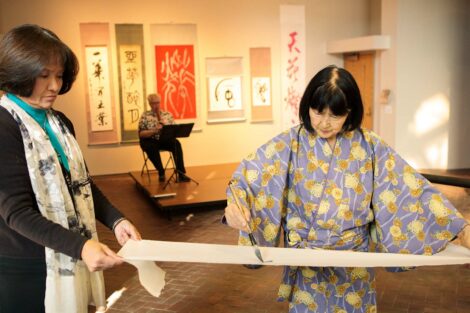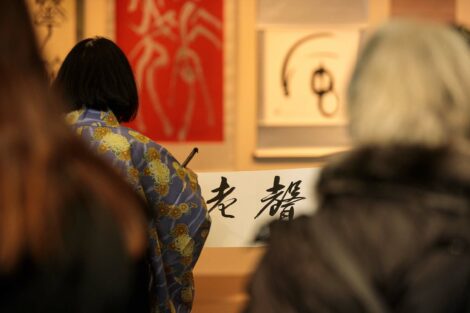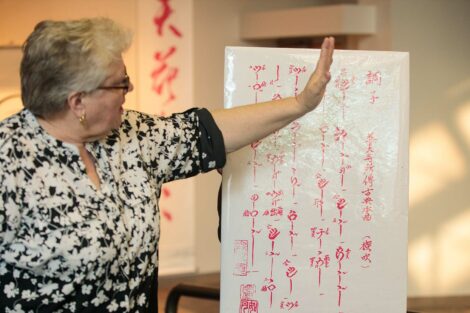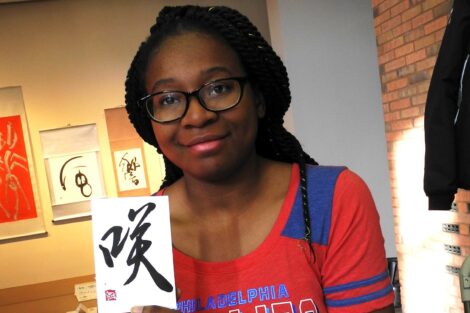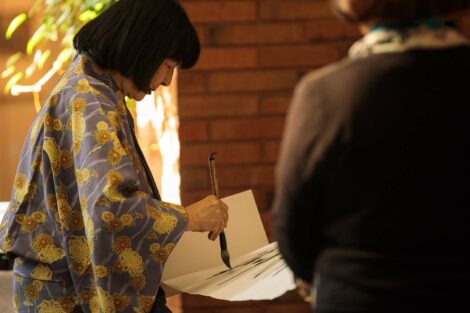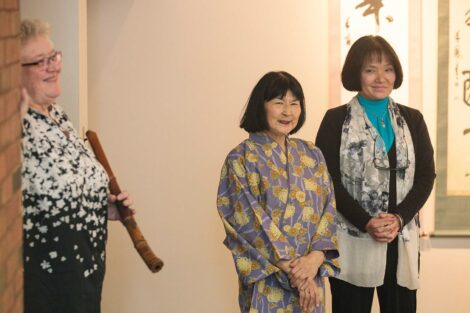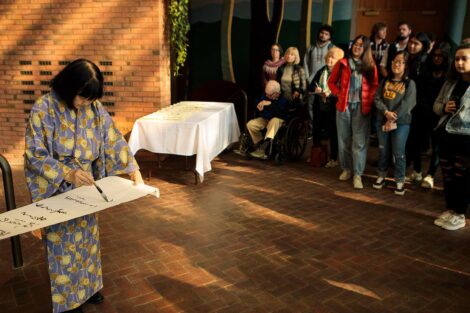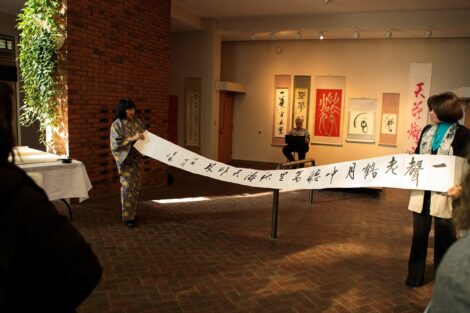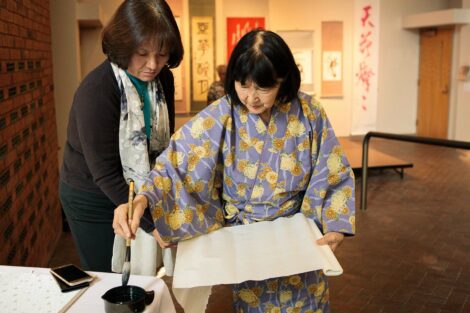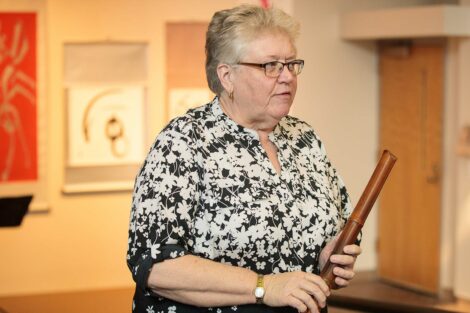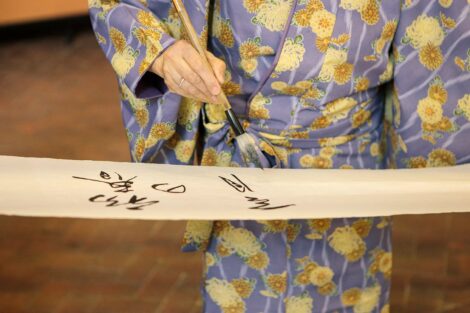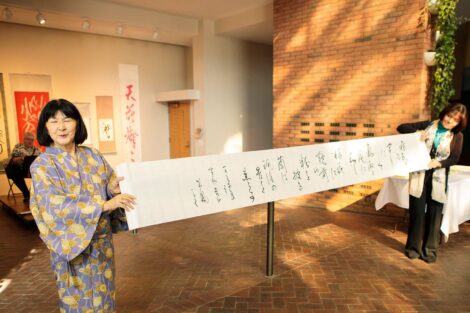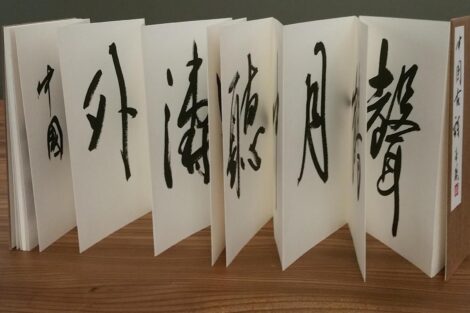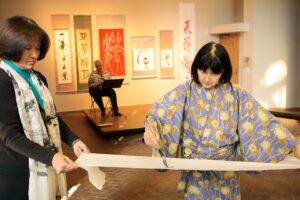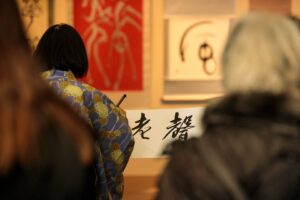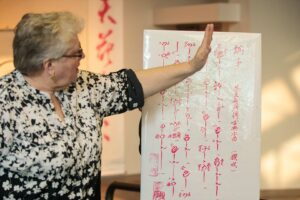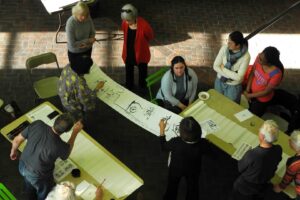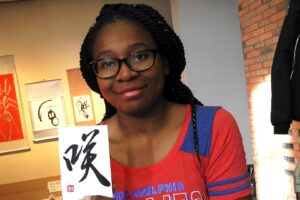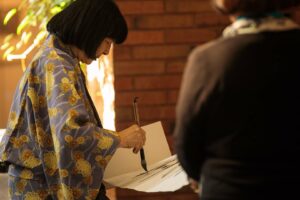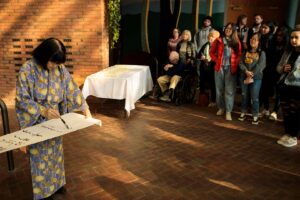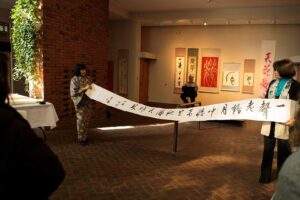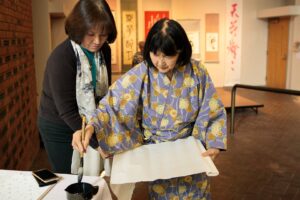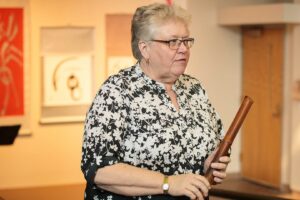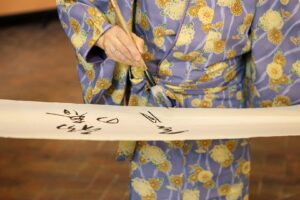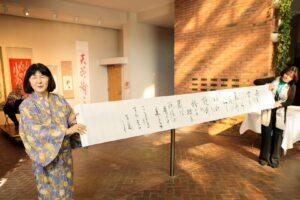Notice of Online Archive
This page is no longer being updated and remains online for informational and historical purposes only. The information is accurate as of the last page update.
For questions about page contents, contact the Communications Division .
Master calligrapher responds to performance of traditional Japanese bamboo flute
In a collaborative performance, Japanese calligraphy master Shuho Kondo responded in brushstrokes to music played by Nora Nohraku Suggs on the shakuhachi, a traditional Japanese bamboo flute. While Suggs performed, Kondo gave form to kanji and hiragana characters, working on a long sheet of paper and then filling an accordian-folded manuscript that is now held in Kirby Art Study Center. Suggs, flutist and artistic director of the chamber music ensemble SATORI, read traditional Japanese sheet music, explaining the notation technique to students, faculty, and community members in attendance. Following the performance, Kondo led a calligraphy workshop and created individual calligraphy characters for a few students, representing their names in brushstrokes. Starting with a name and birthdate, she selected kanji that represented an aspect of the student's personality. Kondo selected “bloom” for Cheyenne Prater ’20. “When you laugh, it means your spirit is blooming,” said Kondo. The germ for the performance originated with Fumiko Suesawa Green ’84, who has been working with The Center for Global Education and International Services at Northampton Community College to bring Japanese artists and musicians to the Lehigh Valley. The performance was part of a semester-long showcase of Japanese art that corresponded to courses taught by Ingrid Furniss, associate professor of art and acting chair of Asian studies, and Larry Stockton, professor and head of music and specialist in traditional Japanese music. Events included the renowned Japanese ensemble Reigaksuha performing gagaku, an ancient form of orchestral music, and in Williams Center Gallery, an exhibit of woodcuts by Tsukioka Yoshitoshi, master of Ukiyo-e, a genre of woodblock prints and paintings that flourished in Japan from the 17th through 19th centuries. Furniss delivered a lecture on Yoshitoshi. Ryan Holmberg, freelance art historian and translator of manga, discussed the influence of Yoshitoshi and other Ukiyo-e artists on contemporary manga, and he visited the Asia 101 class taught by Paul Barclay, professor of history, where he spoke about “Katsumata Susumu and the Anti-Nuclear Manga.” Marilyn Shoemaker Hazelton led a haiku and tanka workshop.
